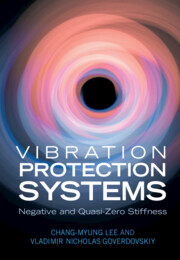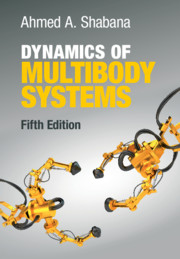Refine search
Actions for selected content:
2002 results in Engineering design, kinematics, and robotics
2 - Vibration Protection Systems with Negative and Quasi-Zero Stiffness
-
- Book:
- Vibration Protection Systems
- Published online:
- 29 October 2021
- Print publication:
- 18 November 2021, pp 25-51
-
- Chapter
- Export citation
8 - Methods of Experimental Study of Vibration Protection Systems with Negative and Quasi-Zero Stiffness
-
- Book:
- Vibration Protection Systems
- Published online:
- 29 October 2021
- Print publication:
- 18 November 2021, pp 201-237
-
- Chapter
- Export citation
1 - Vibrations Destroying Human–Machine Systems Inside and Outside
-
- Book:
- Vibration Protection Systems
- Published online:
- 29 October 2021
- Print publication:
- 18 November 2021, pp 1-24
-
- Chapter
- Export citation
Acknowledgments
-
- Book:
- Vibration Protection Systems
- Published online:
- 29 October 2021
- Print publication:
- 18 November 2021, pp xv-xvi
-
- Chapter
- Export citation
Glossary
-
- Book:
- Vibration Protection Systems
- Published online:
- 29 October 2021
- Print publication:
- 18 November 2021, pp xvii-xviii
-
- Chapter
- Export citation
6 - Dynamics of Systems with Sign-Changing Stiffness
-
- Book:
- Vibration Protection Systems
- Published online:
- 29 October 2021
- Print publication:
- 18 November 2021, pp 145-171
-
- Chapter
- Export citation
Copyright page
-
- Book:
- Vibration Protection Systems
- Published online:
- 29 October 2021
- Print publication:
- 18 November 2021, pp iv-iv
-
- Chapter
- Export citation
7 - Dynamics of Systems with Sign-Changing Stiffness
-
- Book:
- Vibration Protection Systems
- Published online:
- 29 October 2021
- Print publication:
- 18 November 2021, pp 172-200
-
- Chapter
- Export citation
10 - Development and Use of Vibration Protection Systems with Negative and Quasi-Zero Stiffness
-
- Book:
- Vibration Protection Systems
- Published online:
- 29 October 2021
- Print publication:
- 18 November 2021, pp 264-293
-
- Chapter
- Export citation
3 - Modeling of Elastic Postbuckling in Large and Dimensioning the Mechanisms with Negative Stiffness
-
- Book:
- Vibration Protection Systems
- Published online:
- 29 October 2021
- Print publication:
- 18 November 2021, pp 52-84
-
- Chapter
- Export citation
Contents
-
- Book:
- Vibration Protection Systems
- Published online:
- 29 October 2021
- Print publication:
- 18 November 2021, pp v-x
-
- Chapter
- Export citation
Index
-
- Book:
- Vibration Protection Systems
- Published online:
- 29 October 2021
- Print publication:
- 18 November 2021, pp 294-300
-
- Chapter
- Export citation
4 - The Type and Number Synthesis of Function-Generating Mechanisms
-
- Book:
- Vibration Protection Systems
- Published online:
- 29 October 2021
- Print publication:
- 18 November 2021, pp 85-115
-
- Chapter
- Export citation
Preface
-
- Book:
- Vibration Protection Systems
- Published online:
- 29 October 2021
- Print publication:
- 18 November 2021, pp xi-xiv
-
- Chapter
- Export citation
9 - In Harmony with Conventional Vibration Protection Systems
-
- Book:
- Vibration Protection Systems
- Published online:
- 29 October 2021
- Print publication:
- 18 November 2021, pp 238-263
-
- Chapter
- Export citation
5 - Dynamics of Systems with Sign-Changing Stiffness
-
- Book:
- Vibration Protection Systems
- Published online:
- 29 October 2021
- Print publication:
- 18 November 2021, pp 116-144
-
- Chapter
- Export citation

Vibration Protection Systems
- Negative and Quasi-Zero Stiffness
-
- Published online:
- 29 October 2021
- Print publication:
- 18 November 2021

Dynamics of Multibody Systems
-
- Published online:
- 14 September 2020
- Print publication:
- 05 March 2020
-
- Textbook
- Export citation
Copyright page
-
- Book:
- Rigid Body Kinematics
- Published online:
- 26 August 2020
- Print publication:
- 10 September 2020, pp iv-iv
-
- Chapter
- Export citation
Index
-
- Book:
- Rigid Body Kinematics
- Published online:
- 26 August 2020
- Print publication:
- 10 September 2020, pp 283-286
-
- Chapter
- Export citation
